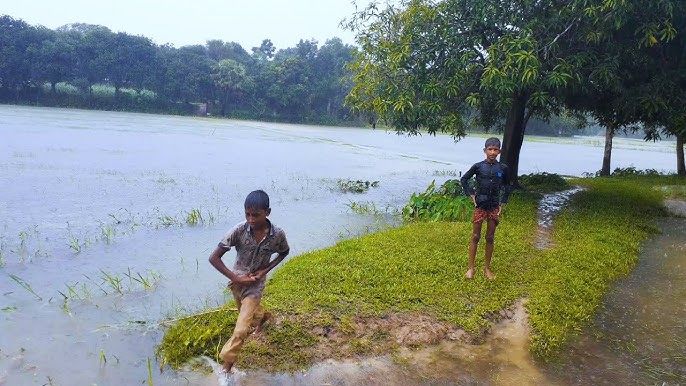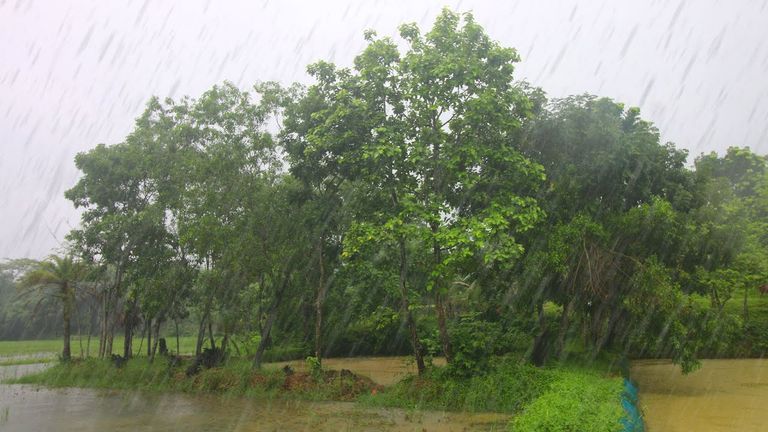Assalamu Alaikum/Hello
Friends of my blurt space Community
I'm @sawfin001 from Bangladesh
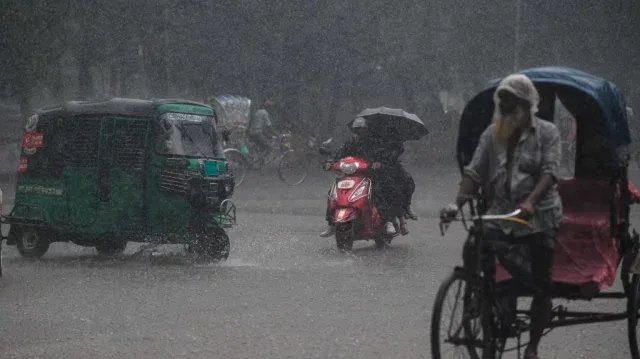
Rain, in its many forms, alters the world around us in subtle and profound ways. It softens hard edges, enhances colors, creates mood, and adds a certain sense of drama to everyday scenes. The sky darkens, the streets glisten, and the air feels fresher, cleaner. In photography, these transformations create endless opportunities for compelling and atmospheric images.
Photographing in the rain is not just about capturing raindrops; it is about capturing the essence of the moment. From the soft drizzle that gently kisses leaves to a torrential downpour that forces people to find shelter, rain photography is about mood, texture, and the dance between light and water.
The Elements of Rainy Day Photography
- Mood and Atmosphere
Rainy day photography is inherently moody. Whether it’s the mist hanging over a mountain, the fog rising from a damp field, or the subdued light of an urban street reflecting in puddles, the atmosphere created by rain is unlike any other. It brings out the melancholic beauty of a scene, often creating a dreamy or surreal quality.
Photographers who embrace this moody quality can create images that resonate emotionally with viewers. The overcast sky acts like a giant softbox, diffusing the light and softening shadows. This can result in photographs that feel more intimate, quieter, and introspective.
Consider a photograph of an old stone building on a rainy day. The texture of the wet stone, combined with the soft, diffused light, can evoke a sense of history, permanence, and solitude. The reflections in puddles or on wet cobblestones can add depth and layers to the composition, creating a visual metaphor for memory and reflection.
- Reflections and Puddles
One of the most visually striking elements of rain photography is the reflections it creates. Puddles on the ground mirror the world above them, creating opportunities for creative compositions. A city street, for example, can be transformed into a shimmering canvas where buildings, people, and lights are reflected in pools of water.
To capture these reflections, photographers can position their cameras close to the ground, using the puddle as a natural mirror. This technique works particularly well in urban environments, where the reflections of neon signs, traffic lights, and car headlights can create dynamic and colorful compositions.
Reflections can also be used to create symmetry in a photograph, drawing the viewer’s eye into the image. Imagine a puddle reflecting the silhouette of a lone figure walking down a deserted street. The reflection, combined with the muted tones of a rainy day, can create a haunting, almost cinematic quality to the image.
- Raindrops: A Study in Detail
Raindrops themselves can be a fascinating subject for photography. Whether they’re dripping from the edge of a leaf, clinging to a windowpane, or falling in a heavy downpour, capturing the delicate beauty of raindrops requires attention to detail and a keen eye for composition.

Macro photography is particularly well-suited to capturing raindrops. With a macro lens, photographers can zoom in on the intricate patterns of raindrops on leaves, flowers, or other surfaces. The texture and clarity of the water droplets can create a striking contrast with the surface they rest on, drawing the viewer’s attention to the fine details of the scene.
Raindrops on glass can also create interesting effects. Shooting through a rain-covered window, for example, can create a soft, blurry quality to the image, as the water distorts the view beyond. This technique is especially effective in capturing the feeling of being indoors, safe and warm, while the world outside is wet and cold.
- Movement and Energy in Rain Photography
While many rain photographs focus on stillness and mood, rain is also an inherently dynamic element, full of movement and energy. Capturing the motion of falling rain can add a sense of urgency and drama to an image.
One way to capture this movement is by using a slow shutter speed. When the shutter is open for longer, the falling rain is captured as a series of streaks, emphasizing the movement of the water. This technique can be especially effective in creating a sense of chaos or intensity, such as during a heavy rainstorm.
On the other hand, a fast shutter speed can freeze individual raindrops in midair, capturing their unique shapes and the way they interact with light. This can create a sense of suspension, as if time has been momentarily paused.
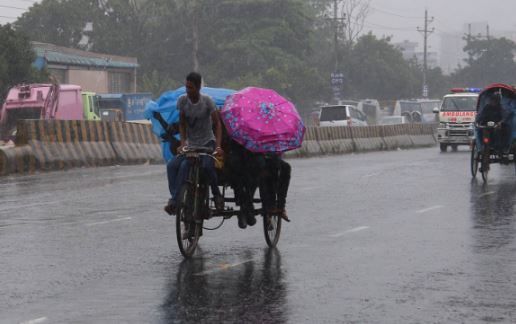
In urban environments, the movement of rain can be combined with the movement of people and cars, creating dynamic, action-packed scenes. The blur of pedestrians hurrying through the rain, combined with the streaks of falling water, can create a sense of urgency and life in the image.
- Lighting in Rainy Day Photography
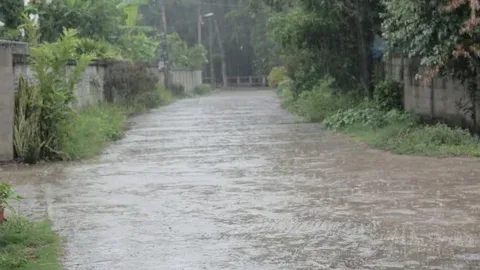
Lighting is one of the most crucial aspects of photography, and rainy days offer a very particular kind of light. Overcast skies create soft, diffused lighting, which is often ideal for capturing details without harsh shadows or strong highlights. The soft light brings out colors in a way that bright sunlight can’t, often enhancing greens, blues, and reds.
For portrait photography, rainy days can be a blessing. The even lighting makes it easier to capture skin tones naturally, and the subdued atmosphere can bring out more genuine expressions from the subject.
However, the low light conditions of a rainy day can also be challenging. It often requires adjusting camera settings to avoid underexposure or blur. In such cases, raising the ISO or using a wider aperture can help. Additionally, photographers might experiment with artificial light sources like street lamps, car headlights, or shop windows, which can add warmth and contrast to the cool, moody tones of a rainy day.
- Weather Gear for Photography
Photographing in the rain comes with its own set of practical challenges, primarily how to protect both the photographer and their equipment from the elements. Waterproof clothing and boots are essential for staying comfortable during a rainy shoot. A good rain jacket with a hood and waterproof gloves can help keep the photographer dry and focused on their work rather than on the discomfort of being wet.
For the camera, rain covers or plastic bags can be used to shield it from water. Many cameras and lenses today come with weather sealing, but it's still important to take precautions, especially in heavy rain. Wiping the lens frequently and carrying a microfiber cloth to remove water droplets are practical tips to ensure that the images remain sharp and clear.
Tripods can be especially useful on rainy days when longer exposure times are needed due to lower light levels. A tripod helps to keep the camera steady, particularly when shooting reflections or slow-shutter images of falling rain.
Locations for Rain Photography
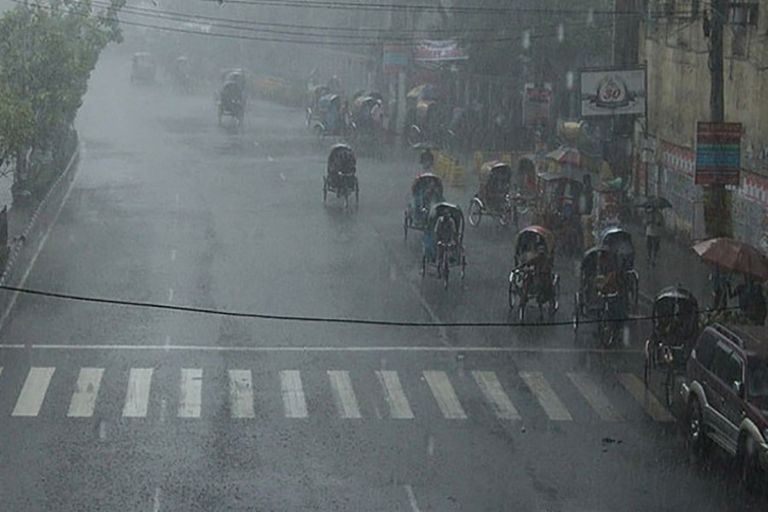
Rain can transform almost any location into a photographic opportunity, but certain places are particularly well-suited to rain photography. Urban environments, nature scenes, and landscapes all offer unique possibilities for capturing rain.
- Urban Rain Photography
Cities come alive during the rain. The wet streets reflect the lights from cars, streetlamps, and neon signs, creating vibrant, colorful scenes. The hustle and bustle of people hurrying under umbrellas, the splash of tires through puddles, and the fog rising from manhole covers all combine to create a dynamic, energetic environment.
Photographers can focus on the architecture, using the wet surfaces to highlight lines and shapes that might not stand out on a dry day. Reflections in windows, glass buildings, or puddles can also add depth and complexity to urban compositions.
Rainy cities at night offer a particularly rich opportunity for photography. The darkness, combined with the reflections of artificial lights, can create a moody, almost noir-like atmosphere. Long exposure photography can capture the trails of headlights or the blur of people moving through the scene, adding a sense of life and motion to the image.
- Nature in the Rain
Nature scenes take on a special beauty during and after rain. The colors become more saturated, the leaves and grass appear greener, and the mist that often accompanies rain creates a mystical, ethereal quality to forests and mountains.
Rain can bring out textures in nature that are often overlooked. The wet bark of trees, the sheen on rocks, and the droplets clinging to spider webs are all details that can be highlighted in rain photography. A forest that might look ordinary on a dry day can be transformed into a magical, almost otherworldly place when shrouded in mist and rain.
Streams and rivers swell with rainwater, creating opportunities for dramatic landscape photography. Waterfalls, in particular, become more powerful and impressive after a rainstorm, and the surrounding rocks and foliage glisten with moisture, adding to the overall sense of freshness and life.
- Rainy Day Portraits
Portrait photography on a rainy day offers the chance to capture unique, emotional images. The soft, diffused light is flattering to skin tones, and the mood created by the rain can lead to more introspective and candid expressions from the subject.
Photographers can use umbrellas, raincoats, and other props to enhance the story of the portrait. An image of someone standing under an umbrella, looking out over a rain-soaked city, can evoke a sense of solitude or reflection. Alternatively, a playful shot of someone splashing in puddles or laughing in the rain can convey joy and freedom.
Shooting portraits in the rain also opens up creative possibilities for posing and composition.

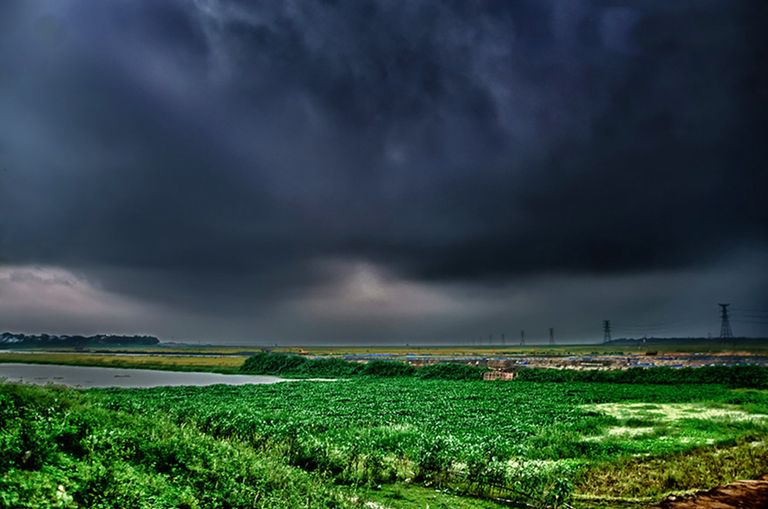
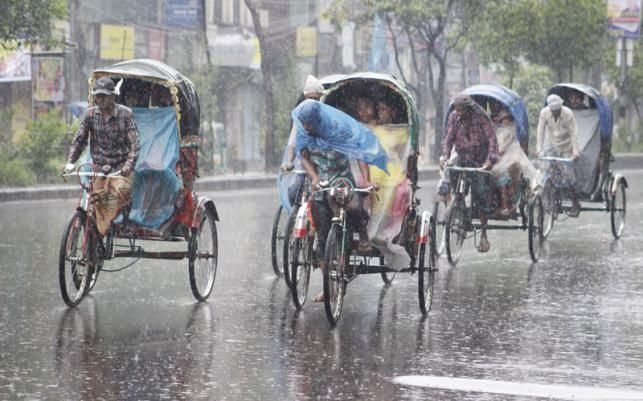
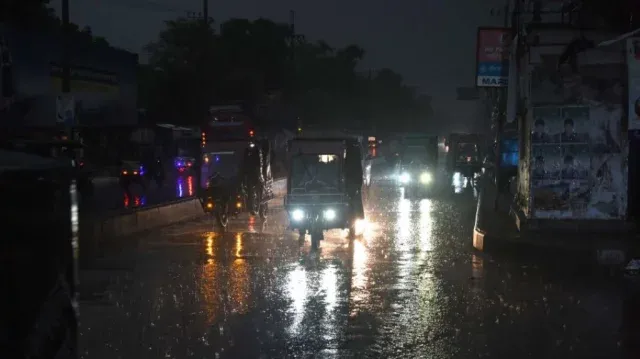
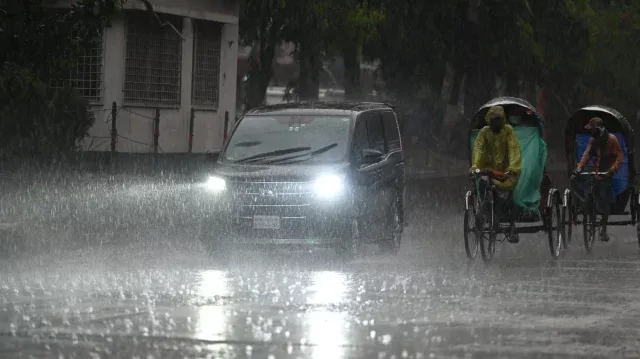

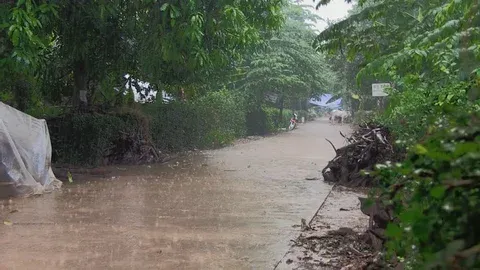

বৃষ্টি, তার বিভিন্ন রূপে, আমাদের চারপাশের জগতকে সূক্ষ্ম এবং গভীর উপায়ে পরিবর্তন করে। এটি শক্ত প্রান্তগুলিকে নরম করে, রঙ বাড়ায়, মেজাজ তৈরি করে এবং দৈনন্দিন দৃশ্যে নাটকের একটি নির্দিষ্ট অনুভূতি যোগ করে। আকাশ অন্ধকার হয়ে যায়, রাস্তাগুলি ঝলমল করে, এবং বাতাস আরও সতেজ, পরিষ্কার বোধ করে। ফটোগ্রাফিতে, এই রূপান্তরগুলি বাধ্যতামূলক এবং বায়ুমণ্ডলীয় চিত্রগুলির জন্য অফুরন্ত সুযোগ তৈরি করে।
বৃষ্টিতে ছবি তোলা মানেই শুধু বৃষ্টির ফোঁটা ধরা নয়; এটা মুহূর্তের সারমর্ম ক্যাপচার সম্পর্কে. মৃদু গুঁড়ি গুঁড়ি থেকে শুরু করে মুষলধারে মুষলধারে বর্ষণ যা মানুষকে আশ্রয় খুঁজতে বাধ্য করে, বৃষ্টির ফটোগ্রাফি হল মেজাজ, টেক্সচার এবং আলো এবং জলের মধ্যে নৃত্য।
বৃষ্টির দিনের ফটোগ্রাফির উপাদান
- মেজাজ এবং বায়ুমণ্ডল
বৃষ্টির দিনের ফটোগ্রাফি সহজাতভাবে মুডি। পাহাড়ের উপর ঝুলে থাকা কুয়াশা হোক, স্যাঁতসেঁতে মাঠ থেকে কুয়াশা উঠুক বা জলাশয়ে প্রতিফলিত শহুরে রাস্তার নিস্তব্ধ আলো, বৃষ্টির দ্বারা সৃষ্ট বায়ুমণ্ডল অন্য যেকোন থেকে আলাদা নয়। এটি একটি দৃশ্যের বিষণ্ণ সৌন্দর্য প্রকাশ করে, প্রায়শই একটি স্বপ্নময় বা পরাবাস্তব গুণ তৈরি করে।
ফটোগ্রাফাররা যারা এই মেজাজ গুণমানকে আলিঙ্গন করে এমন ছবি তৈরি করতে পারেন যা দর্শকদের সাথে আবেগপূর্ণভাবে অনুরণিত হয়। মেঘলা আকাশ একটি দৈত্যাকার সফটবক্সের মতো কাজ করে, আলোকে ছড়িয়ে দেয় এবং ছায়াকে নরম করে। এর ফলে এমন ফটোগ্রাফ হতে পারে যা আরও ঘনিষ্ঠ, শান্ত এবং আত্মদর্শী বোধ করে।
বৃষ্টির দিনে একটি পুরানো পাথরের বিল্ডিংয়ের একটি ছবি বিবেচনা করুন। নরম, বিচ্ছুরিত আলোর সাথে মিলিত ভেজা পাথরের টেক্সচার ইতিহাস, স্থায়ীত্ব এবং একাকীত্বের অনুভূতি জাগাতে পারে। পুডলে বা ভেজা মুচির পাথরের প্রতিফলন রচনাটিতে গভীরতা এবং স্তর যোগ করতে পারে, স্মৃতি এবং প্রতিফলনের জন্য একটি চাক্ষুষ রূপক তৈরি করতে পারে।
- প্রতিফলন এবং Puddles

বৃষ্টির ফটোগ্রাফির সবচেয়ে দৃষ্টিকটু উপাদানগুলির মধ্যে একটি হল এটি তৈরি করা প্রতিফলন। মাটিতে পুডলগুলি তাদের উপরের বিশ্বকে আয়না করে, সৃজনশীল রচনাগুলির সুযোগ তৈরি করে। উদাহরণস্বরূপ, একটি শহরের রাস্তা একটি ঝিকিমিকি ক্যানভাসে রূপান্তরিত হতে পারে যেখানে ভবন, মানুষ এবং আলো জলের পুকুরে প্রতিফলিত হয়।
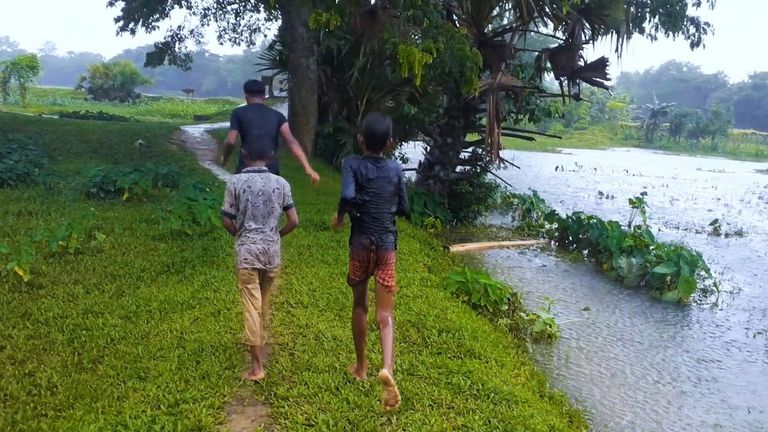
এই প্রতিচ্ছবিগুলি ক্যাপচার করার জন্য, ফটোগ্রাফাররা তাদের ক্যামেরাগুলিকে মাটির কাছাকাছি অবস্থান করতে পারে, পুডলটিকে প্রাকৃতিক আয়না হিসাবে ব্যবহার করে। এই কৌশলটি শহুরে পরিবেশে বিশেষভাবে ভাল কাজ করে, যেখানে নিয়ন চিহ্ন, ট্র্যাফিক লাইট এবং গাড়ির হেডলাইটের প্রতিফলন গতিশীল এবং রঙিন রচনা তৈরি করতে পারে।
প্রতিফলনগুলি একটি ফটোগ্রাফে প্রতিসাম্য তৈরি করতেও ব্যবহার করা যেতে পারে, চিত্রটিতে দর্শকের চোখ আঁকতে পারে। নির্জন রাস্তায় হেঁটে যাওয়া একক চিত্রের সিলুয়েট প্রতিফলিত করে একটি জলাশয়ের কল্পনা করুন। প্রতিফলন, একটি বৃষ্টির দিনের নিঃশব্দ সুরের সাথে মিলিত, চিত্রটির জন্য একটি ভুতুড়ে, প্রায় সিনেমাটিক গুণমান তৈরি করতে পারে।
- বৃষ্টির ফোঁটা: বিস্তারিতভাবে একটি অধ্যয়ন
রেইনড্রপগুলি ফটোগ্রাফির জন্য একটি আকর্ষণীয় বিষয় হতে পারে। সেগুলি পাতার কিনারা থেকে ফোঁটা ফোঁটা করে, একটি জানালা দিয়ে আটকে থাকা, বা প্রবল বর্ষণে পড়ুক না কেন, বৃষ্টির ফোঁটাগুলির সূক্ষ্ম সৌন্দর্যকে ক্যাপচার করার জন্য বিশদটির দিকে মনোযোগ দেওয়া এবং রচনার জন্য তীক্ষ্ণ দৃষ্টি প্রয়োজন।
ম্যাক্রো ফটোগ্রাফি বৃষ্টির ফোঁটা ক্যাপচার করার জন্য বিশেষভাবে উপযুক্ত। একটি ম্যাক্রো লেন্সের সাহায্যে, ফটোগ্রাফাররা পাতা, ফুল বা অন্যান্য পৃষ্ঠের বৃষ্টির ফোঁটাগুলির জটিল নিদর্শনগুলিতে জুম করতে পারে। জলের ফোঁটাগুলির টেক্সচার এবং স্বচ্ছতা দৃশ্যের সূক্ষ্ম বিবরণের প্রতি দর্শকের দৃষ্টি আকর্ষণ করে, তারা যে পৃষ্ঠে বিশ্রাম নেয় তার সাথে একটি আকর্ষণীয় বৈপরীত্য তৈরি করতে পারে।
কাচের উপর বৃষ্টির ফোঁটাও আকর্ষণীয় প্রভাব তৈরি করতে পারে। বৃষ্টি-ঢাকা জানালা দিয়ে শুটিং করা, উদাহরণস্বরূপ, ছবিটির জন্য একটি নরম, ঝাপসা গুণ তৈরি করতে পারে, কারণ জল বাইরের দৃশ্যকে বিকৃত করে। এই কৌশলটি গৃহের ভিতরে, নিরাপদ এবং উষ্ণ হওয়ার অনুভূতি ক্যাপচার করতে বিশেষভাবে কার্যকর, যখন বাইরের পৃথিবী ভিজা এবং ঠান্ডা।
- বৃষ্টি ফটোগ্রাফিতে আন্দোলন এবং শক্তি
যদিও অনেক বৃষ্টির ফটোগ্রাফ স্থিরতা এবং মেজাজের উপর ফোকাস করে, বৃষ্টিও একটি সহজাত গতিশীল উপাদান, চলাচল এবং শক্তিতে পূর্ণ। পতনশীল বৃষ্টির গতি ক্যাপচার করা একটি ইমেজে জরুরিতা এবং নাটকীয়তার অনুভূতি যোগ করতে পারে।
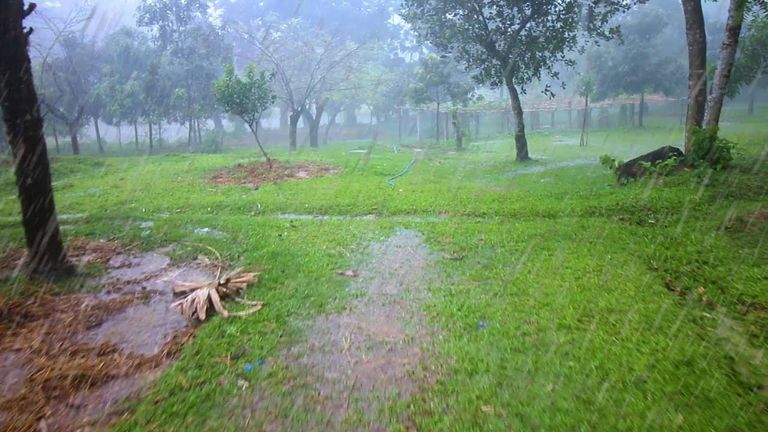
এই আন্দোলন ক্যাপচার করার একটি উপায় একটি ধীর শাটার গতি ব্যবহার করা হয়. যখন শাটারটি দীর্ঘ সময়ের জন্য খোলা থাকে, তখন পতনশীল বৃষ্টিকে জলের চলাচলের উপর জোর দিয়ে একের পর এক রেখা হিসাবে ধরা হয়। এই কৌশলটি বিশৃঙ্খলা বা তীব্রতার অনুভূতি তৈরি করতে বিশেষভাবে কার্যকর হতে পারে, যেমন একটি ভারী বৃষ্টিপাতের সময়।
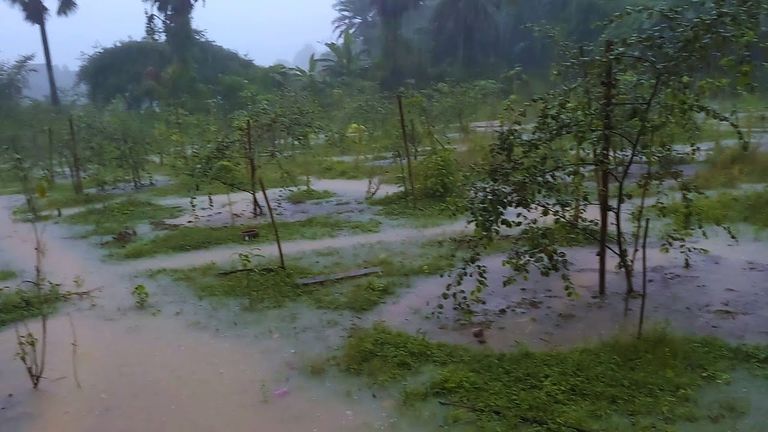
অন্যদিকে, একটি দ্রুত শাটার গতি মধ্যবায়ুতে পৃথক বৃষ্টির ফোঁটাগুলিকে বরফ করে দিতে পারে, তাদের অনন্য আকারগুলি এবং তারা যেভাবে আলোর সাথে যোগাযোগ করে তা ক্যাপচার করতে পারে। এটি সাসপেনশনের অনুভূতি তৈরি করতে পারে, যেন সময় ক্ষণিকের জন্য থেমে গেছে।
শহুরে পরিবেশে, বৃষ্টির চলাচল মানুষ এবং গাড়ির চলাচলের সাথে মিলিত হতে পারে, গতিশীল, অ্যাকশন-প্যাকড দৃশ্য তৈরি করে। বৃষ্টির মধ্যে দিয়ে পথচারীদের তাড়াহুড়ো করার অস্পষ্টতা, পতনশীল জলের রেখার সাথে মিলিত, চিত্রটিতে জরুরিতা এবং জীবনের অনুভূতি তৈরি করতে পারে।
- রেনি ডে ফটোগ্রাফিতে আলোকসজ্জা
আলোকসজ্জা ফটোগ্রাফির সবচেয়ে গুরুত্বপূর্ণ দিকগুলির মধ্যে একটি, এবং বৃষ্টির দিনগুলি একটি বিশেষ ধরনের আলো সরবরাহ করে। মেঘলা আকাশ নরম, বিচ্ছুরিত আলো তৈরি করে, যা প্রায়শই হয়
